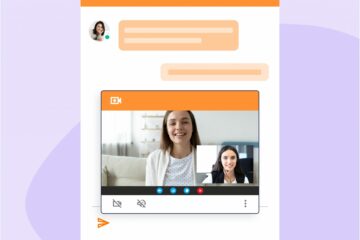One of the most outstanding features of inConcert is that it provides powerful contact center integration capabilities with ERPs to optimize business processes. In this interview, Rodrigo de Andrés, Regional Manager of inConcert, explains the advantages of this type of integration and some use cases in marketing and customer service.
What are the main advantages of integrating a contact center platform to the company’s ERP?
In the contact center industry, agents or consultants are usually forced to use multiple management applications. They usually have 5 to 10 applications open at the same time in order to perform their task (email, Excel, telephony solutions, ERP system, CRM), all in an unbundled way. This implies an overload of work because they have to be interacting with multiple systems or copying information from one to another at the same time, and it is not the most efficient thing to do.
The main advantage of integrating the contact center is that, in the case of inConcert, it allows to connect to multiple information sources, to obtain or deposit data from the system. Instead of communicating with different contact solutions, the agent centralizes omnichannel interactions in a single interface, and additionally, all information is presented in a single view. Thus, the agent will be more efficient in responding by identifying the information as soon as he receives the communication; no need to ask him questions to identify who he is or what his account number is, for example.
In addition to this simplicity from an efficiency point of view, there are important security advantages. If a company outsources the contact center service to a provider (such as a BPO), it is often not convenient to give users direct access to the ERP. What inConcert solves is that you get a single point of data entry – the core contact center solution – directly against the ERP. So users – many of them working from home – are not accessing an entire ERP system through a different route. Access is limited to what the user requires at that moment. This is important in terms of data protection and connectivity, as well as saving on ERP licensing costs.
What integration facilities does inConcert offer?
inConcert has always had middleware at its core, and graphical tools to interact with and configure it. By means of a drag-and-drop design tool it is possible to configure the integration with these systems in a simple and user-friendly way, shortening integration times.
Could you comment on some application cases?
We have developed several projects. For example, for international fast food chains, a CRM interface for order taking was developed within inConcert. This interacts directly with the kitchen of each of the restaurants of these companies. The orders are dispatched directly, integrated with the order management and invoicing system. This has two advantages: first, the CRM interface is usually more user-friendly than that of an ERP for the daily use of an agent; and second, access is centralized in a single tool, avoiding the agent to switch from one application to another.
We also developed important projects for bottling companies. We created WhatsApp Bot and voice bot with artificial intelligence, automating order taking. This integrates directly with the ERP and generates the order registration, which triggers the logistics of dispatching the order to each store or warehouse.
Can integration occur in other solutions besides the Omnichannel Contact Center?
Indeed, inConcert’s portfolio of solutions includes a Help Desk module that adds to the platform the possibility of having BPM (Business Process Management) type processes within a company. We have several cases of companies in the retail and food industries that, although they have an interaction at the contact center level to receive the customer’s request, complaint or query, this triggers actions that do not necessarily fall within the contact center’s orbit.
For example, in a multi-brand appliance store, a customer complains by email about the failure of a refrigerator, the contact center takes the complaint but is not the unit responsible for solving the problem. inConcert Help Desk is the solution that integrates with all the processes of logistics systems, ERP and technical support of the different brands of that company. Instead of accessing an ERP, taking all the information of the case and analyzing it, the company’s collaborator receives in a synthesized and specific way what he/she has to do, in the shortest way.
We have cases of customers with 40 contact center positions, but 400 Help Desk licenses, because there are claims that come directly to the store. The agent only has to document the case, which automatically escalates to the corresponding area through workflows integrated to the ERP.
Does this type of integration also apply to marketing and sales?
Yes, we have worked several cases with the inConcert Marketing solution, which optimizes investment in digital media that require contact center assistance to close the sale (such as sales of automobiles, insurance, telecommunications products, banking and finance, which have not yet materialized in ecommerce).
This process requires integration with an ERP to register the user and initiate credit authorization, for example. All this integration is done at the inConcert level. The investment arrives as a lead to the marketing platform, which generates automations to define the most optimal “journey” that the lead should follow. It then refers it to the contact center for immediate contact. This is the one who integrates the information gathered in that first contact with the processes that follow later in the backoffice or ERP.




